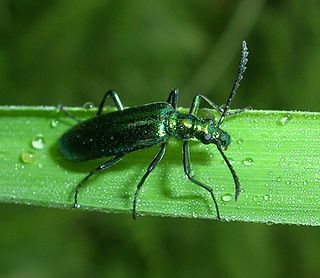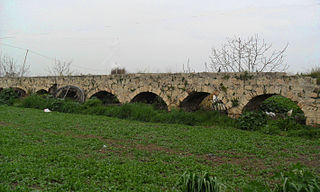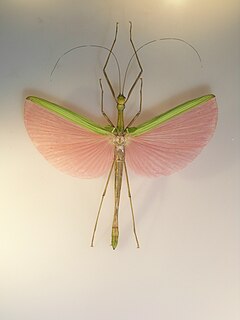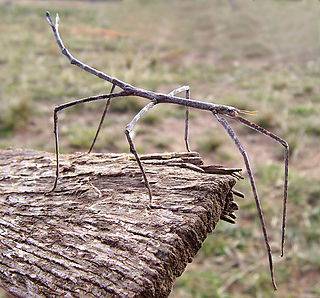
Phobaeticus is a genus of Asian stick insects comprising over 25 species.

Necrosciinae is a subfamily of the stick insect family Lonchodidae, with its greatest diversity in South-East Asia.

Prionoceridae is a small family of beetles, in the suborder Polyphaga. They form a group within the cleroid beetles and were formerly treated as a subfamily (Prionocerinae) within the family Melyridae. Very little is known of their life history but most species are pollen feeders as adults and occur in large numbers during spring or the host flowering season. Larvae are predatory or feed on decomposing wood.
Asceles is a genus from the stick insect family Diapheromeridae. Some of the species of Asceles have a distribution in Malaysia and Singapore.

Sosibia is an Asian genus of stick insects in the family Lonchodidae and subfamily Necrosciinae.

Anchiale or Anchialeia was a historic city of ancient Cilicia now a part of modern Mersin, Turkey. It was inhabited during the Hellenistic, Roman, and Byzantine eras.

Agraeciini is a large tribe of bush crickets or katydids in the conehead subfamily, Conocephalinae.

Sipyloidea is a genus of stick insects of the family Lonchodidae. The genus was described by Brunner von Wattenwyl in 1893.

Marmessoidea is an Asian genus of stick insects in the family Diapheromeridae and subfamily Necrosciinae. The native range of species appears to be from India and South-East Asia to the Wallace line.

Necroscia is an Asian genus of stick insects in the family Diapheromeridae and subfamily Necrosciinae. Species have been recorded from South-East Asia.

Calvisia is a genus of stick insects in the subfamily Necrosciinae. Species are known to be distributed in temperate and tropical Asia.

Phasmatini is a tribe of stick insects in the family Phasmatidae. There are more than 40 described species, found in Australasia, Asia and possibly Brazil.

Neoclides is an Asian genus of stick insects in the family Diapheromeridae, subfamily Necrosciinae. Species have a known distribution from: Indo-China, Borneo, Sumatra, Philippines and New Guinea.

Anchiale is a genus of stick insects in the family Phasmatidae and tribe Phasmatini. Species have a known distribution from Australasia. The type species, A. maculata, was originally thought to be a Mantis.

Paramenexenus is a genus of phasmids belonging to the family Lonchodidae.
Parasipyloidea is a genus of phasmids belonging to the family Lonchodidae.
Parasosibia is a genus of phasmids belonging to the family Lonchodidae.
Pseudodiacantha is an Asian genus of stick insects in the family Lonchodidae and subfamily Necrosciinae. Members of Pseudodiacantha are excellent examples of camouflage, as they are known to cover themselves in mossy or lichenous outgrowths that supplement their disguise.
Anchiale marmorata is a medium-sized stick insect found in Papua New Guinea. This species is very similar to A. modesta but females are smaller in size and have shorter legs.
Anchiale simplex is a medium-sized stick insect. The existence of this species is questionable. It was described from a single female from French Polynesia in the Museum of Natural History of Vienna, but close examination by entomologist, Frank Hennemann, of the holotype in the Museo Civico di Storia Naturale revealed this species to be too similar to Anchiale stolli from the Bismarck Archipelago and Solomon Islands. Further research is needed.














